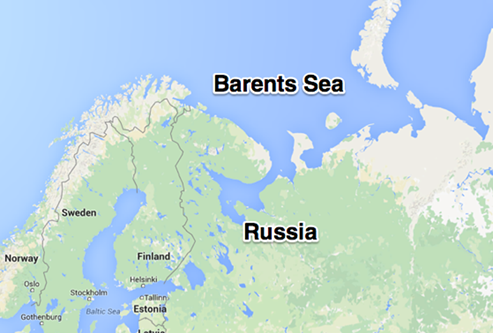The warming of the Arctic Ocean and its Impact on India
- Posted By
10Pointer
- Categories
Environment
- Published
20th Aug, 2022
-
-
Context
Recently, Finnish Meteorological Institute has published a study, suggesting that the Arctic region is warming at a faster rate and even the best of climate models may not be accurate enough to predict the change accurately.
Key Finding of the Report:
- The study has shown that the Arctic Amplification is four times faster than the global average.
- The effect is concentrated in the Eurasian part of the Arctic, where the Barents Sea north of Russia and Norway is warming at an alarming rate — seven times faster than the global average

-
Observations of the Previous Studies:
- Earlier the Arctic was warming twice the global rate prior to the beginning of the 21st century.
- As per a ‘Special Report on the Ocean and Cryosphere in a Changing Climate’ in 2019 by the Intergovernmental Panel on Climate Change (IPCC), Arctic surface air temperature has likely increased by more than double the global average over the last two decades.
- The Arctic Monitoring and Assessment Programme (AMAP) has warned that the Arctic has warmed three times quicker than the planet, and the chance of the sea ice completely disappearing in summers is 10 times greater if the planet is warmer by two degrees Celsius above the pre-industrial levels.
- The average annual temperature in the region increased by 3.1 degrees Celsius compared to 1 degree Celsius for the planet.
- Mean Arctic amplification saw steep changes in 1986 and 1999. The changes are taking shorter time periods (50 years in this case) due to fast-paced changes.
About Arctic Amplifications:
- The Arctic is warming twice to three times as fast as the rest of the planet due to sea ice loss—a phenomenon known as Arctic amplification.
- Sea ice and snow have high albedo (a measure of the reflectivity of the surface), as sea ice declines, it becomes younger and thinner, and therefore more vulnerable to further melting ocean surfaces can absorb more energy from the Sun, causing additional heating resulting in amplification.
- Arctic amplification is driving ice sheet melt, sea level rise, more intense Arctic fire seasons, and permafrost melt. A growing body of research also shows that rapid Arctic warming is contributing to changes in mid-latitude climate and weather.
- The lapse rate or the rate at which the temperature drops with elevation decreases with warming. Studies show that the ice-albedo feedback and the lapse rate feedback are responsible for 40% and 15% of polar amplification respectively.

-
Consequences of Arctic Amplifications:
Thinning of Greenland Ice Sheet:
- The Greenland ice sheet is melting at an alarming rate and the rate of accumulation of sea ice has been remarkably low since 2000, marked by young and thinner ice replacing the old and thicker ice sheets.
- The unusual summer temperatures resulted in a melt of 6 billion tonnes of ice sheet per day, amounting to a total of 18 billion tonnes in a span of three days, enough to cover West Virginia in a foot of water.
-
Rise in Sea Level:
- Greenlandic ice sheet holds the second largest amount of ice, after Antarctica, and therefore it is crucial for maintaining the sea level. In 2019, its melting was the primary reason for the rise in the sea level, about 1.5 metres.
- If the sheet melts completely, the sea level would rise by seven metres, capable of subsuming island countries and major coastal cities.
-
Impact on Biodiversity:
- The Arctic Amplification is resulting in an increase in the incidence of rainfall which is affecting the availability and accessibility of lichens to the reindeer.
- It is also causing widespread starvation and death among the Arctic fauna.
-
Thawing in many parts of the Arctic:
- As permafrost thaws, it releases the powerful greenhouse gas methane into the atmosphere, which contributes to further warming in a reinforcing feedback loop.
- Experts fear that the thaw and the melt will also release the long-dormant bacteria and viruses that were trapped in the permafrost and can potentially give rise to diseases. For example, Anthrax outbreak in Siberia in 2016, where nearly 2,00,000 reindeer died.
Important Point: The causes and consequences of Arctic amplification are cyclical, what might be a cause can be a consequence too.
-
Impact on India:
- The link between Arctic Amplification and the indian Monsoon is of important due to two reasons:
- Because of the vulnerabilities, India faces due to extreme weather events, and
- The heavy reliance on rainfall for water and food security.
- In 2021 a study found that the reduced sea ice in the Barents-Kara Sea region can lead to extreme rainfall events in the latter half of the monsoons — in September and October.
- The changes in the atmospheric circulation due to diminishing sea ice combined with the warm temperatures in the Arabian Sea contribute to enhanced moisture and drive extreme rainfall events.
- World Meteorological Organization’s report-(State of Global Climate in 2021) has highlighted that due to the rise in the melting of sea ice in the polar regions, the sea level along the Indian coast is rising faster than the global average rate.s

